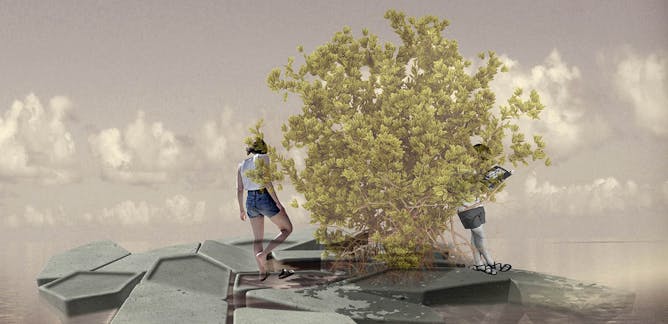
Articles on Coastlines
Displaying 1 - 20 of 47 articles

Mangrove forests are shrinking due to human activities, yet they’re essential for shoreline protection and carbon sequestration. Ongoing research explores the concept of “floating” mangrove forests.

Some Aussie beaches are being reshaped and coastal dunes are marching inland. We used data from aerial photography, field surveys, laser mapping and drones to study incredible rates of change.

Public concerns for real estate value, and a focus on the self, make flood risk maps unpopular. However, these concerns should not dissuade governments from providing resources we can all trust.

Tech tools are playing a vital role in addressing security threats at sea in various west and central African countries.

Over 200 million tonnes of sediment are transported by rivers to the sea each year, the most widespread water contaminant in the country. Its devastating impact on marine life has to be reversed.

Floodwaters pulsing into the sea normally clear within six days. But the 2022 floods in eastern Australia were different.

A survey of Miami-Dade residents found bipartisan support for protecting Biscayne Bay − though most locals were not aware of the extent of its decline in recent years.

With smartphones as commonplace as towels and sunscreen in the beach bag, why not add coastal data collection to your list of holiday activities this summer? Look for the CoastSnap camera cradles.

Severe bleaching is forecast to hit 12 Indonesian marine protected areas every year by 2030 – then spread to other areas. Here’s what locals, experts and the government say we need to do to save them.

Concrete structures can recreate the complex forms of reefs, offering refuge to wildlife.

After decades of absence, crocodiles are now being seen off Bali, Lombok and Java. That’s good for the species – but what about us?

Saltwater intrusion is bad for human health, ecosystems, crops and infrastructure. Here’s how seawater can move inland, and why climate change is making this phenomenon more frequent and severe.

Mangroves do a surprising amount for us. But we’re often not looking after them. Here’s how we can protect these forests of the sea edge better.

Local communities need to be warned more clearly and effectively if there is a threat of a storm surge and of coastal flooding.

Rising seas are pushing coastal ecosystems to the limit of endurance. Now international research reveals a “tipping point” will be reached if we allow more than 2 degrees of global warming.

Coastlines need to be recognised as dynamic, shifting environments rather than as environments that need to be controlled and managed.

Mangroves and salt marshes pump out methane – but soak up carbon dioxide. Overall, the world’s coasts are a net greenhouse sink – and we must preserve them

Fairbourne on the west coast of Wales is at risk from both rising sea levels and river flooding.

Mayotte is no exception to the adage “small islands, big problems”. A newly born volcano combined with poor land management and accelerating climate change has put its fabled lagoon at risk.

Moving entire communities threatened by rising seas isn’t as far-fetched as it sounds.
